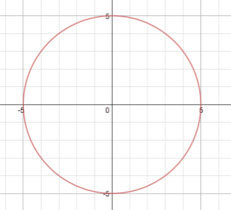Home
Episode 6 Supports
Episode Description
Exploring: Keoni and Sasha return to the equation y = x2/4 and derive it using the definition of a parabola, the Pythagorean theorem, and their method from Episode 2.
Students’ Conceptual Challenges
Sasha and Keoni struggle when the teacher asks them to “mark something that would stand for a general point on the parabola” [2:14].
Once Sasha marks a point on the parabola, Keoni wants to identify the coordinates of that particular location on the grid, rather than understanding that the point is meant to stand in for all points on the parabola. Sasha is unsure how to represent the point and wants to call is “Point X.”
- It helps them to explore the meaning of a particular point (6,9). They use the fact that the 6 is represented on the x-axis and the 9 on the y-axis to similarly label their general point as (x,y). They continue to work with the idea of a general point in future episodes.
Focus Questions
For use in a classroom, pause the video and ask these questions:
1. [Pause video at 2:35]. What does it mean to be a general point on the parabola?
2. [Pause video at 7:06]. Keoni drew a horizontal line. What property does every point on that line share?
Supporting Dialogue
Ask several students to respond to the question below.
- Keoni and Sasha are often drawing a horizontal or vertical line. How are they using those lines in their problem solving?
- Keoni and Sasha are often drawing a horizontal or vertical line. How are they using those lines in their problem solving?
Math Extensions
1. Consider the circle below. Can you find an equation of the circle that is solved for y? What about for x?

Mathematics in this Lesson
Lesson Description
Targeted Understanding
CC Math Standards
CC Math Practices
Lesson Description
Sasha and Keoni use the definition of a parabola, the Pythagorean theorem, and their methods from previous lessons to represent the y-value for any point on a particular parabola, given the x-value of that point. In contrast to Lesson 3 in which y-values were given, in this episode x-values will be given.
Targeted Understandings
This lesson can help students:
- Interpret the algebraic expressions that are substituted into the Pythagorean theorem (namely, y – 1, y + 1, and x), during the process of deriving an equation for a particular parabola, as distances on a coordinate grid.
- Conceive of algebraic expressions, such as y – 1, as both a single entity and as a process of subtracting 1 from a number.
Common Core Math Standards
• CCSS.M.HSF.IF.C.8: Write a function defined by an expression in different but equivalent forms to reveal and explain different properties of the function.
Keoni and Sasha re-express the equation for a given parabola that they derived in Lesson 3 (namely, x = √(4y)) as y = x2/4. They discuss how the first form of the equation is easier to use when one is given a y-value and needs to determine the corresponding x-value, while the second form is easier to use when one is given an x-value. However, they recognize that the two forms are equivalent and that either can be used to solve both problems.
• CCSS.M.HSG.GPE.A.2. Define appropriate quantities for the purpose of descriptive modeling.
Sasha and Keoni use the geometric definition of a parabola, along with the Pythagorean theorem to derive the equation of a given parabola (namely, y = x2/4).
• CCSS.M.HSN.Q.A.2: Define appropriate quantities for the purpose of descriptive modeling.
As they work to derive the equation of a given parabola using the Pythagorean Theorem, Sasha and Keoni define three quantities that represent the lengths of the sides of a right triangle. Because they are using a general point (x,y) on the parabola (rather than a specific point), these distances are algebraic expressions: y–1, y+1, and x.
Common Core Math Practices
CCSS.Math.Practice.MP8. Look for and express regularity in repeated reasoning.
In this lesson, re-expressing the equation for a particular parabola, x = √(4y), as y = x2/4x, is not addressed simply as the application of algebraic manipulation skills. Rather, the process of re-expression illustrates the math practice of looking for and expressing regularity in repeated reasoning. In Episode 3, Sasha and Keoni use the equation x = √(4y) (which they derived in Lesson 3), to find the y-value for a point on the parabola when x = 5. They then repeat their reasoning for x = 10 and x = 437. By paying attention to the algebraic transformations they perform each time to isolate and solve for the y-value, they notice regularities which help them generalize their approach to solve x = √(4y) for y in Episode 4. Approaching the act of re-expression as the generalization of repeated reasoning carries the benefit of reinforcing the equivalence of different forms of an equation and can help students deal with an abstract situation with more meaning.

















